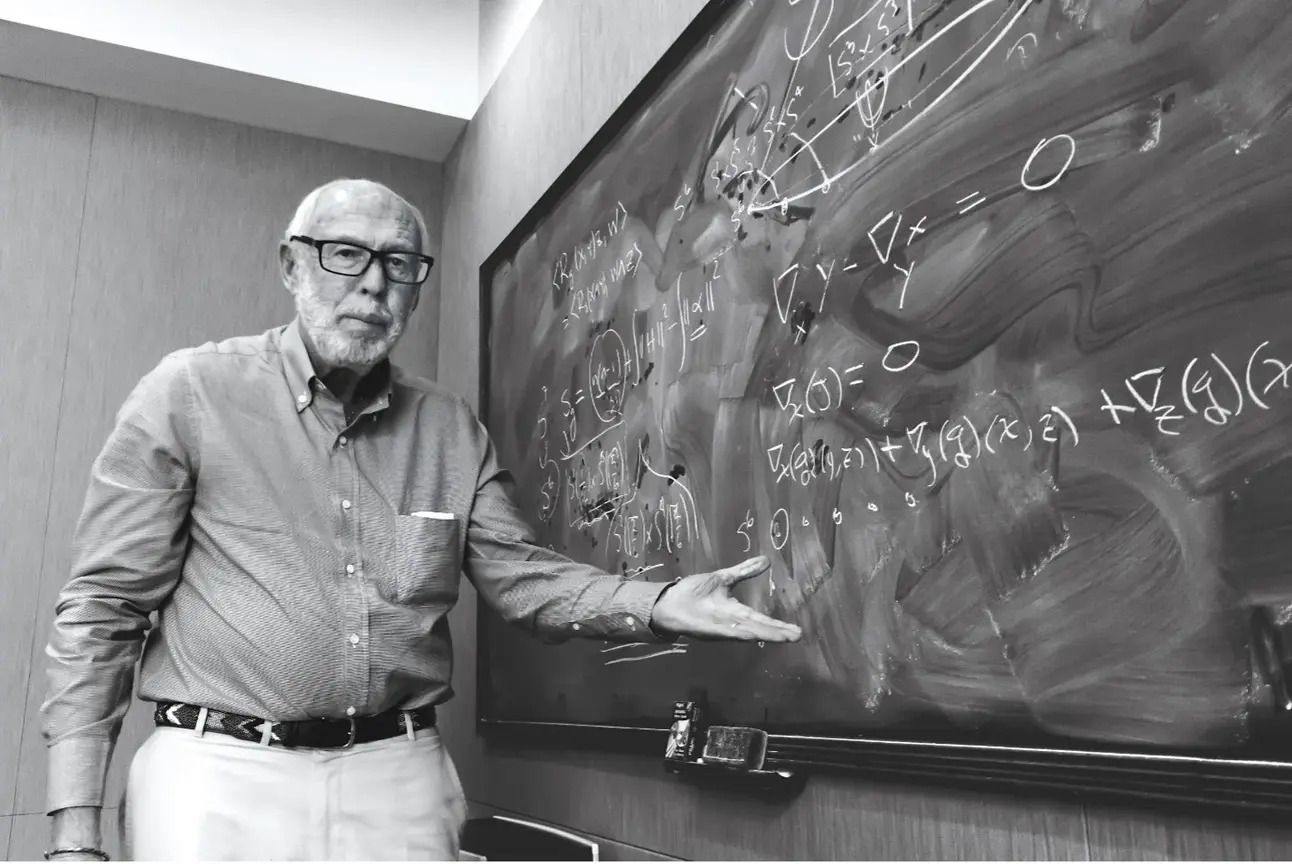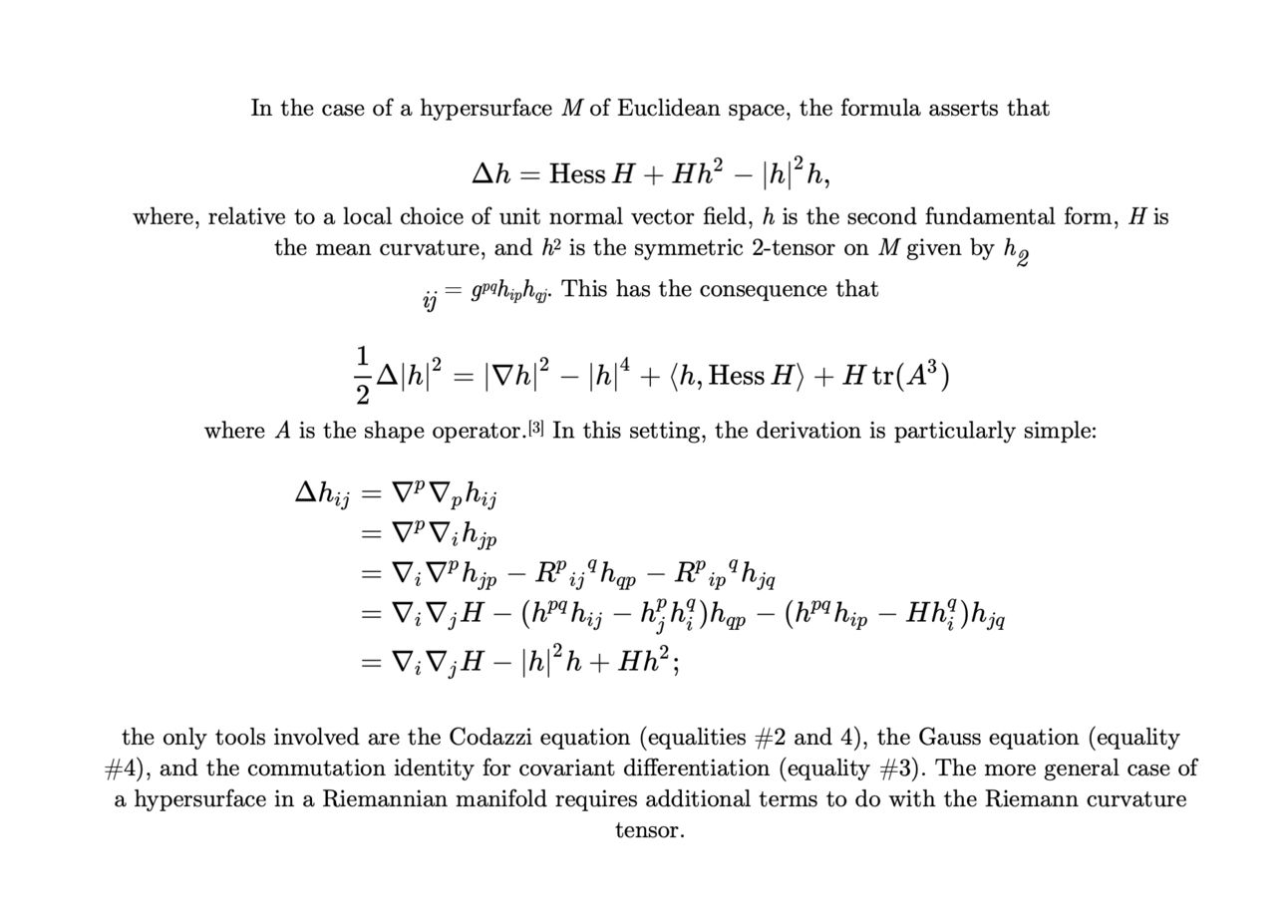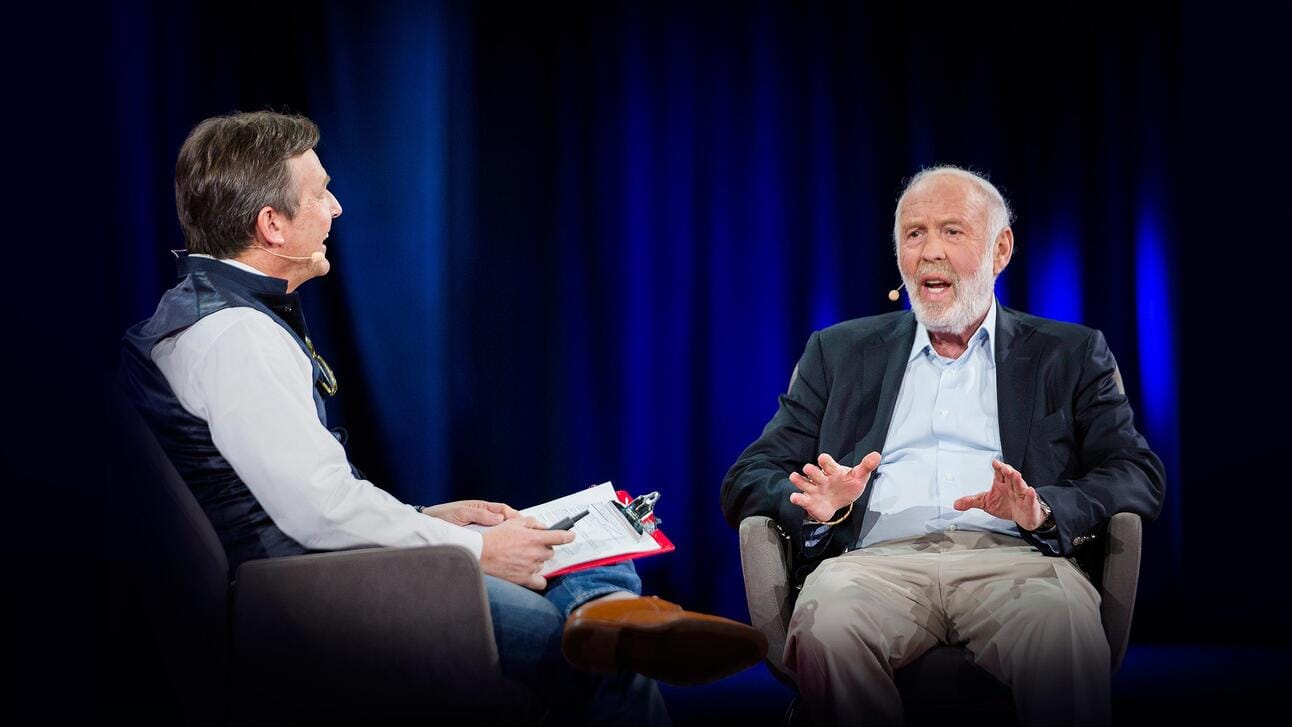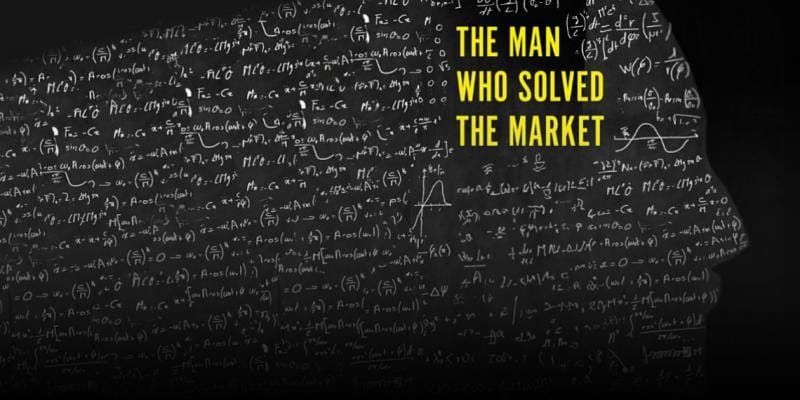- The Weekly Mensch
- Posts
- The Weekly Mensch: Jim Simons
The Weekly Mensch: Jim Simons
A journey into the life and mind of a century’s genius & Chaloutz driven by impact, passion, and commitment to tomorrows.
Us in a Nutshell
We are passionate about the lives, the impact, and the experience of Jewish baby boomers who have changed our world. From finance to the arts, we write about the stories of contemporary heroes who — significantly and meaningfully — changed the face of their respective industries, often starting with nothing but a legacy of exile. We tell their stories for the timeless lessons of intelligence, ethics, and resilience they underline. And we also share some fun anecdotes! Nathan Tob is a fourth-year student at the Queen Mary University of London. He studies Economics, Finance, and Management. Davy Sokolski is a third-year student at Columbia University in New York. He studies International Political Economy.
What is a Mensch?
Leo Rosten defines mensch as “someone to admire and emulate, someone of noble character.” Dr. Saul Levine writes in Psychology Today that a mensch’s personality characteristics include decency, wisdom, kindness, honesty, trustworthiness, respect, benevolence, compassion, and altruism.
Jim’s Rapid Bio

James Harris Simons (Jim Simons), born in 1938, in Brookline (MA), was the only child of Marcia (née Kantor) and Mathew Simons, both Jewish. Growing up in a middle-class Jewish household instilled in him a strong emphasis on education and intellectual curiosity. This cultural foundation he got from Hebrew school and his practice of Jewish traditions played a significant role in shaping his academic pursuits and philanthropic engagement. From a young age, Simons showed a remarkable talent for mathematics, leading him to pursue his studies at MIT, where he earned his undergraduate degree. He later completed a Ph.D. in mathematics from the University of California, Berkeley.
His early academic career included positions at MIT and Harvard before he joined the Institute for Defense Analyses (IDA) as a codebreaker, where he applied his mathematical skills to solve complex cryptographic problems. After being fired from the IDA over his outspoken opposition to the Vietnam War, Simons became the chair of the mathematics department at Stony Brook University in 1968.
In 1982, Simons made a bold move into finance, founding Renaissance Technologies, a hedge fund that revolutionized the industry. Instead of relying on traditional market intuition, Simons assembled a team of mathematicians, physicists, and computer scientists, using data-driven algorithms to drive exceptional returns. His flagship fund, Medallion, became known for its unprecedented success (average of 66%), built on Simons’s belief in the power of mathematics to extract hidden patterns from data.
Beyond finance, Simons was a passionate philanthropist. He and his wife, Marilyn, founded the Simons Foundation, donating billions to scientific research, autism studies, and mathematics education. He also established Math for America to support math teachers across the U.S. and strengthen STEM education nationwide.
Jim Simons passed away on May 10, 2024, at 86. Today, he is remembered as a visionary in finance and a champion of science and education. His legacy embodies a commitment to leveraging knowledge for personal achievement and the greater good, profoundly impacting finance, mathematics, and philanthropy.
Jim’s 5 Lessons
1. Don’t focus as much on the trend, understand what beats it
Simon’s major stance in finance was a rejection of the efficient market theory – the idea that markets always reflect all available information and therefore can’t be predicted – which he believed was “just not true.” During Rennaisance’s first two years, Simons did not yet build models, instead, he invested in commodities and financial instruments, experiencing the market’s fluctuations for better or worse. At the start, Simons and his team engaged in financial bets based on general market trends, but they gradually uncovered more and more anomalies in the data, revealing trends. Over time, he surrounded himself with mathematicians and computer scientists who could help him develop elaborate models rooted in machine learning, which would seek subtle discrepancies in the data that disconfirmed the trends everybody else followed. This focus on very specific and nuanced anomalies allowed Simons to build a strong competitive advantage that very early set him apart from his competitors.
A quote that defines many of the Mensches we present in this newsletter and which accurately embodies Simon’s investment thesis is one from the poet and philosopher Ralph Waldo Emerson: “Do not go where the path may lead, go instead where there is no path and leave a trail.” Jim Simon’s remarkable and recognized career is proof of why focusing on finding and building a way where there is none, is usually most rewarding financially and intellectually. Simons did follow the trend for two years early on, but his understanding of the little, subtle, and hidden anomalies paved the way for his breakthrough. The Hebrew word ‘Chaloutz’ – which requires a great deal of Chutzpah – defines one’s ability to make a step in the unknown. This often leads to substantial rewards in the long run, even if the short run is complicated and hazardous. Don’t fear being at odds with the trend, in fact, chase it and embrace it.
2. Improve the model constantly and consistently
In honor of the science of mathematics, let us develop this point through mathematical reasoning (or whatever seems close to mathematical reasoning). Let us first assume a model, any model for that matter, and compute the limit of that model so it tends to perfect predictability. Well, since perfect predictability is almost impossible, that limit should be infinite. Which is a convenient conclusion to the very point we want to make. Simon’s early financial models did not possess a strong predictability power nor were they that much lucrative. It is through Renaissance’s team iterations and constant testing against data that led to further improvements that Simons and his team developed highly elaborate systems that turned out to be very good at formulating profitable investment predictions.
Just like Renaissance’s models, any business, product, or relationship has an infinite limit to perfection. Only multiple iterations enable substantial improvements and that takes courage and determination, not only in the process of iterating to get better but also in the gutt required to accept to stress-test – and put out there – something that is not perfect, which is in fact the only way to perfection. Simons could have not gotten his models right on a first shot but he certainly couldn’t have improved them without testing them against data and with real money. This confusing duality that is somewhat paradoxical is at the heart of what made Renaissance so successful.
3. Chase impact
In two very different instances of his life, Jim emphasized the importance of impact. The first one was his attempt to solve a well-known mathematical problem that many before him had tried to tackle. Over the six years, he dedicated to that endeavor, he did not quite get to the solution but defined crucial mathematical terms and made some major discoveries along the way. He appreciated the matter for itself but also confessed being glad it had an impact on physics. As he puts it, “Basic science is the root corn of our knowledge of the world [...], one’s definition leads to another’s theory that leads to a third’s machine.” This ode for actual – almost tangible impact – is part of what later drove him to The Institute for Defense Analysis as he could do math half of the time and create algorithms to break Soviet codes the other half. He eventually got fired because of speaking up, marking his disagreement with his boss vis-a-vis the Vietnam War.
As an academic, an algorithm builder, and a wealth manager, Simons always succeeded at blending his excitement for mathematics at its most fundamental level with valuing the impact his discoveries and models could have on others’ fields, research, and capabilities. For Jim, impact was more important than an externality, it was a principle to integrate and one he remained lively and conscious about. Impact – very tangible and directable – is at the heart of what drives us to do great work, it is the result valued in real terms of a nominal amount of hours spent on cracking down a problem. Simon's thirst for impact was a driving force, and so it should be for everyone in any enterprise.
4. Appreciate the aesthetic of the nuance
The first time Simons discovered the fundamental theorem of calculus – which states that if one integrates the derivative of a function, one gets the value of that function – he was amazed by how “beautiful” the theorem is. For Jim, this core appreciation of the beauty of the calculus theorem was true for mathematics as well as other matters in life like the beauty of the market or that of nature. In mathematics, Simons found the ultimate beauty and aesthetics in differential geometry, the topic he specialized in first at MIT and later at Berkeley with his friend, Professor Chern (their work laid the foundation for the Chern-Simons Theory). Simons shared that his appreciation for the elegance he found in differential geometry was what drove him to pursue his thesis, taking a shot at solving a highly complex problem many had tried to tackle unsuccessfully before him.
No matter what you do in life, appreciating the beauty and the aesthetics of details you dive into can be a key to success. Simon’s “love for the beauty of [calculus and] geometry” drove him to tackle one of mathematics’ then most complex unsolved problems, although discouraged from even trying by his thesis advisor. As Jerry Seinfeld – another Mensch we plan to write about soon – said in his 2024 commencement address at Duke University, falling in love with stupid everyday objects is key to enduring the sometimes tough human experience: “I have truly spent my life focusing on the smallest things imaginable, completely oblivious to all the big issues of living.” For Simons, this passionate love for the elegance of a mathematical theorem stood as the dawn of a breakthrough. Even when we engage in the most complex and broad work, appreciating the subtle and mundane details often leads to greater inspiration and drive.

Simons' formula (we don’t understand it, but we appreciate the beauty of it)
5. Build a legacy that empowers the future
As a philanthropist, Simons has dedicated much of his wealth to supporting education, mathematics, and science, with a particular focus on advancing understanding in fields that inspired him. Through the Simons Foundation, he has championed groundbreaking research in areas like autism, physics, and computational biology, demonstrating that success isn’t only about personal gain—it’s about investing in causes that push the boundaries of human knowledge. One remarkable example of this commitment is Math for America, an organization he founded in 2004 to address the shortage of skilled math teachers in the United States. Recognizing that a strong education in math and science begins with quality teaching, Simons built a program that supports and elevates math teachers, providing mentorship, professional development, and incentives to retain skilled educators. His belief that empowering teachers strengthens society as a whole sets him apart as a philanthropist committed to lasting, systemic change, not just charity.
True success leaves a lasting impact on society. Simons’s commitment to giving back reminds that wealth and influence reach their highest potential when used to advance knowledge, education, and opportunity for future generations. His legacy shows that the most meaningful contributions uplift others and fuel lasting progress, creating value that transcends personal achievements. By supporting essential fields and strengthening education, he has built a foundation that expands human understanding and enhances the infrastructure of learning for generations to come.
The Quote of The Week
Don’t give up easily, stick with it, really give it a chance to get where you’re going, and the final principle is hope for good luck.
More About Jim
TED Talk: The Mathematician Who Cracked Wall Street | Jim Simons | The Man Who Solved the Market: How Jim Simons Launched the Quant Revolution by Gregory Zuckerman |


Reply